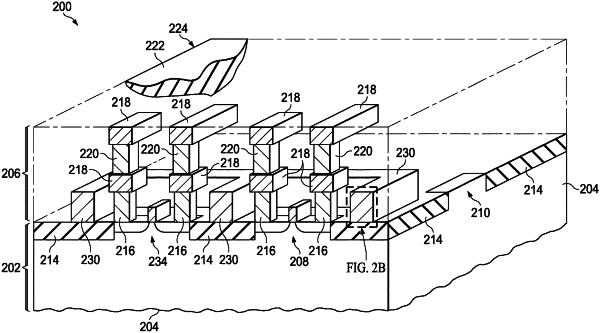| CPC H01L 23/3677 (2013.01) [H01L 21/4882 (2013.01); H01L 23/3731 (2013.01); H01L 23/3733 (2013.01); H01L 23/3736 (2013.01)] | 24 Claims |

|
1. An integrated circuit, comprising:
a substrate comprising semiconductor material;
an interconnect region disposed above the substrate, the interconnect region comprising a dielectric layer stack comprising dielectric materials;
a component disposed in the substrate and configured to generate heat when operating; and
a thermal via disposed in the interconnect region and landing on a field oxide region formed in the substrate, wherein the thermal via includes a cohered nanoparticle film which includes primarily nanoparticles, wherein each nanoparticle of a plurality of the nanoparticles is attached directly to an adjacent one of the nanoparticles, wherein the thermal via has a thermal conductivity higher than dielectric materials touching the thermal via.
|